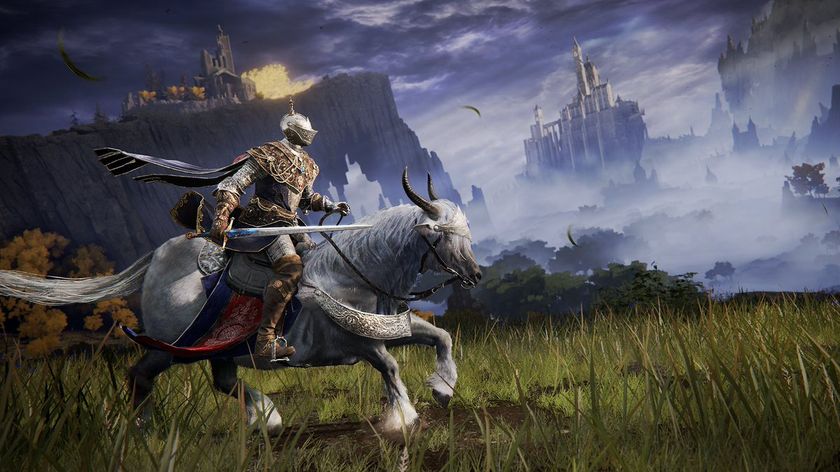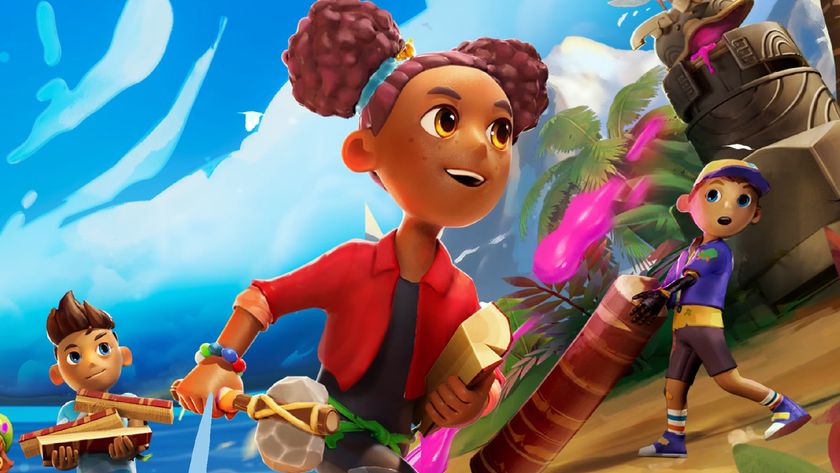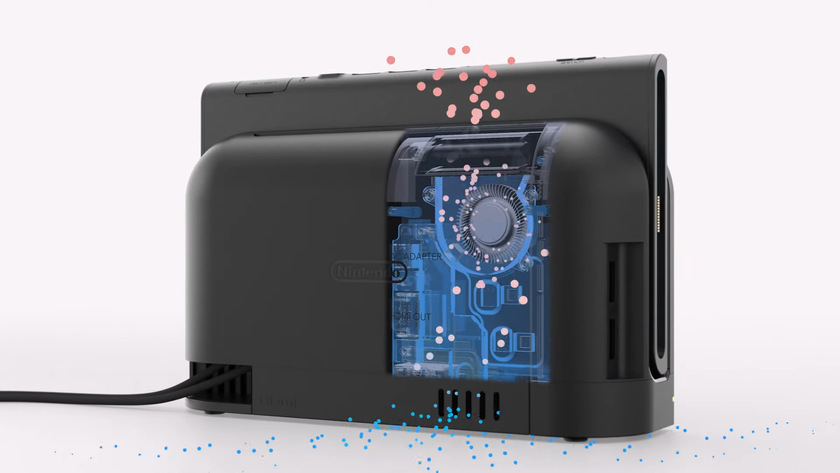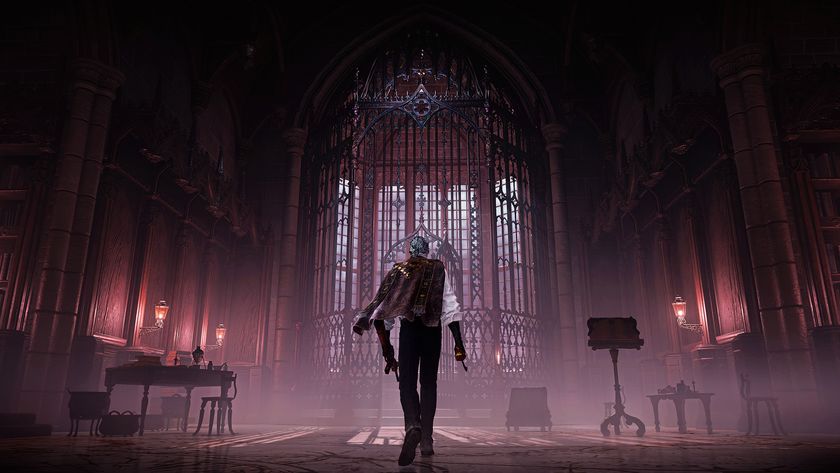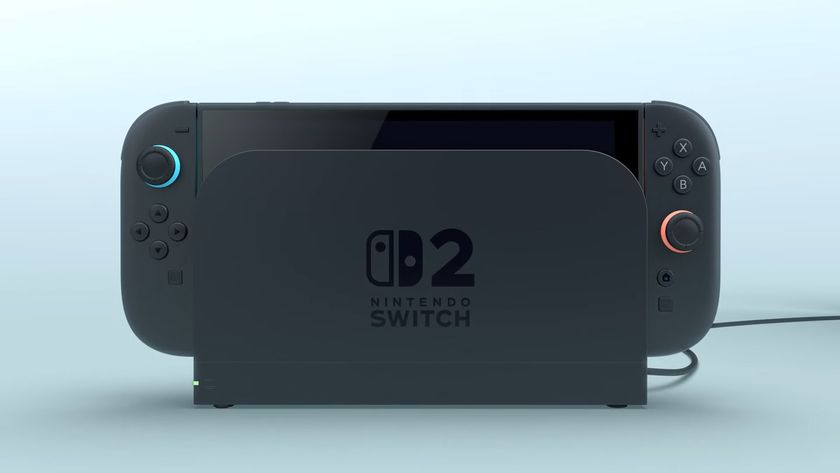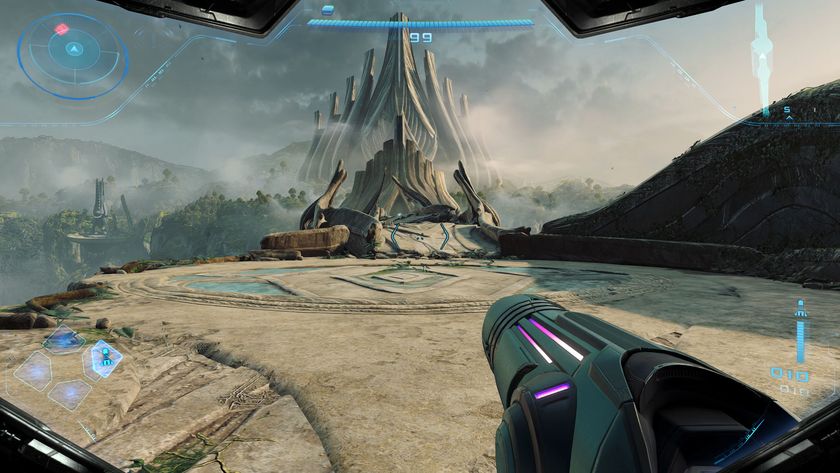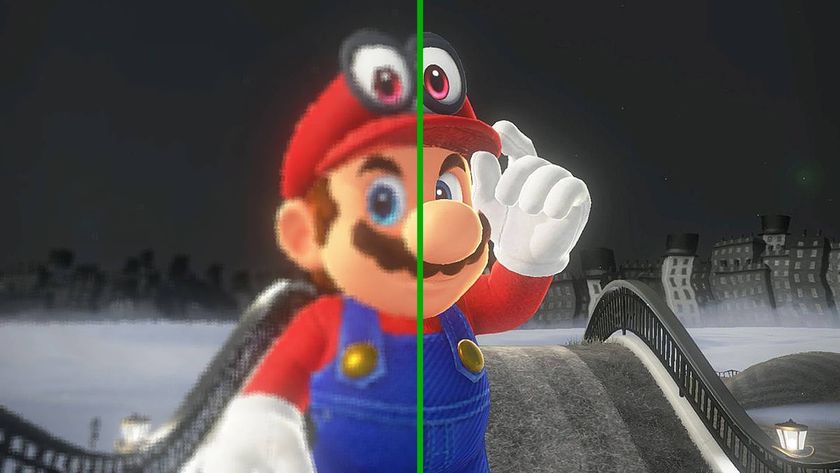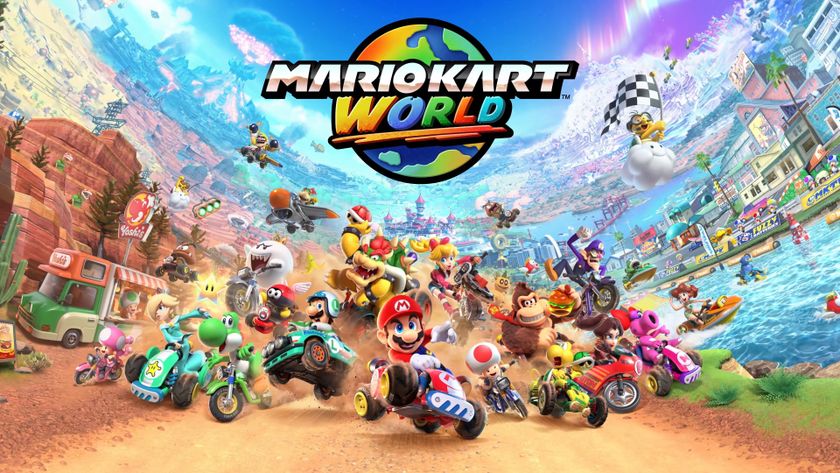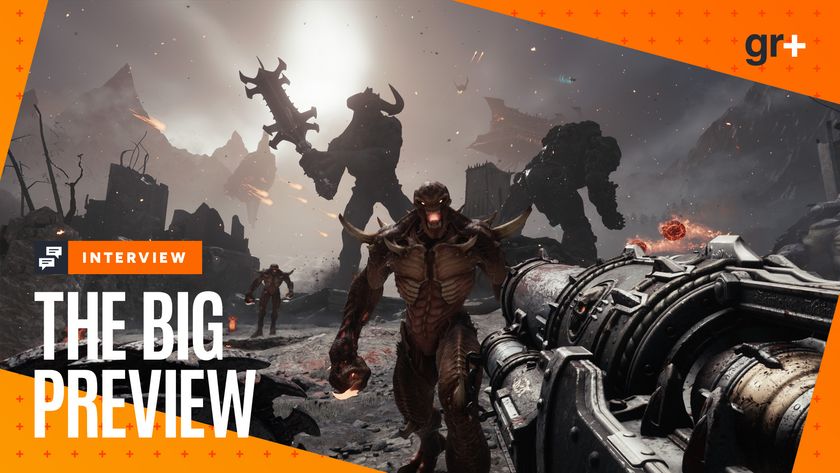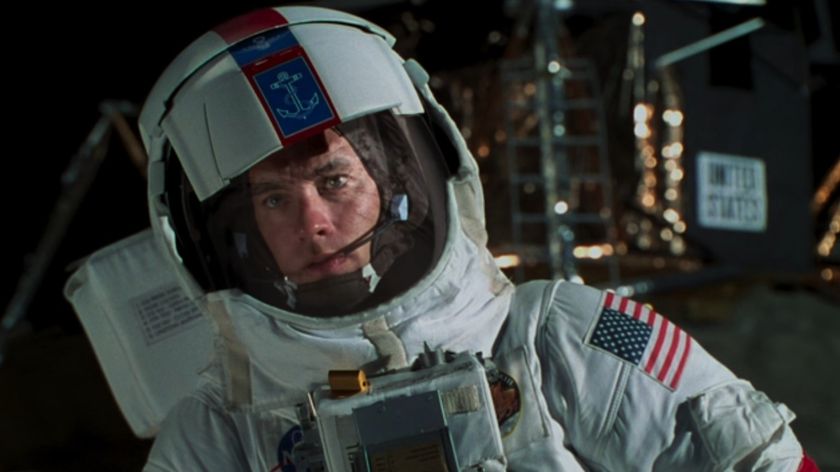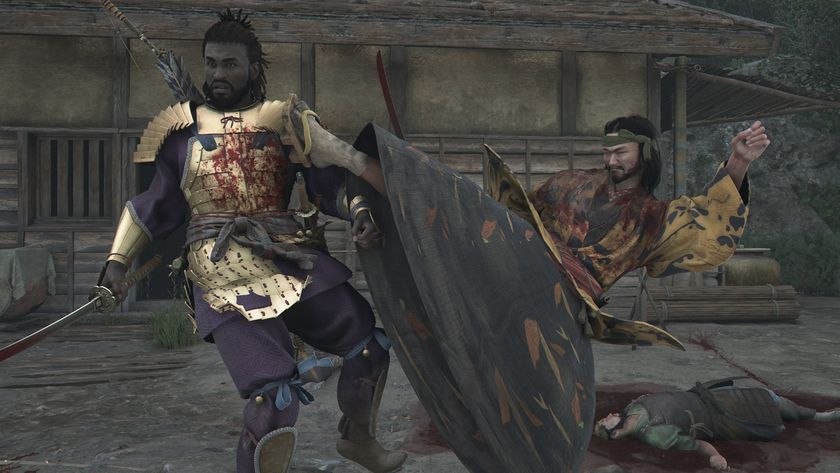Warhammer 40,000: Dawn of War
Join PC Gamer as they watch the sun rise over the future of warfare
ACTION
We're looking down on a war-torn cityscape. The camera swoops to ground level, where we see rubble-strewn streets and, looming above us, once-great gothic structures: part cathedral, part factory, all flying buttresses and imposing porticos. Their once-grand facades are inscribed with the visual narrative of war: bullet holes, plasma burns, shattered brickwork.
We prowl along the road a little further, then launch skywards to view the tableau from above once more. A unit of blue-suited soldiers runs along into view on the road. As we peer closer, we can see U-shaped symbols on their shoulders and boltguns in their armour-clad hands.
The Space Marines, humanity's guardians, have arrived on this battered, war-torn world.
ANALYSIS
It should come as no surprise that Games Workshop (tabletop wargame makers and the creators of Warhammer 40,000) approached Relic Entertainment to create an RTS game based in the 40K universe. With a portfolio that includes the Homeworld games and Impossible Creatures, Relic are the natural choice for the job. Jay Wilson, Dawn of War's Lead Designer, told us about their initial excitement at the prospect. "Most of us are regular Warhammer 40,000 players anyway, and when we heard that Games Workshop wanted us to do a 40K game, we were thrilled. We immediately sat down and worked out loads of ideas."
Now, you'd expect Games Workshop to guard their intellectual property jealously, and have a firm say in the direction of the game. As it transpires, Relic have been given the reins to develop Dawn of War as they see fit. "We took our ideas, many based on the tabletop game, to Games Workshop and presented them," explains Jay. "As we were describing what we wanted to do, they stopped us and told us about the origins of 40K. Basically, they said they'd created the tabletop game as a way to play in the universe they'd designed, using the races and technologies they'd dreamt up. So rather than working within the constraints and rules of the tabletop game, they said to us 'go create a game based in that universe, not directly on the game'. This has given us a lot of creative freedom, and has allowed us to do some really interesting things."
One element that Relic knew they wanted to include in the game was the Space Marines. These genetically engineered soldiers are the elite human warriors of the future. That makes them pretty handy in a fight.
Sign up to the 12DOVE Newsletter
Weekly digests, tales from the communities you love, and more
ACTION
We zoom in for a close-up of the Marines. The game's scalability is immediately apparent - we can zoom right in on individual features, and the level of detail is startling, right down to scarring on armour plates and the intermittent twirling of ammo belts to keep weapon systems oiled and jam-free. These models wouldn't look out of place in a top-notch FPS.
Even at rest, the Space Marines aren't at rest. They scan the horizon for movement, sight down their rapid-firing bolt guns, then pause to check ammo and loading mechanisms. Leading the unit is a Space Marine Commander. Embellished with a swirling cloak and a vast, two-handed warhammer that crackles with static, he's a fearsome behemoth of a man.
Suddenly, there's movement at the end of the street. The Marines do a U-turn, only to find a squad of slavering space-Orks facing them down, gnashing their toothy maws, and brandishing pistols and axes in the air like so many green madmen. They need no incentive, and charge screaming towards the Marines, firing wildly as they come.
The Marines display great discipline and hold their ground. Bolters are raised, and a withering hail of bullets cuts the air. Several Orks tumble mid-stride, but the gap is soon closed. Ranged weapons are holstered in favour of axes and knives, and as the greenskins smash into the humans, the chatter of automatic weapons is replaced by the clang of blade against armour. But the real centrepoint of the battle is the Marine Commander... he strides forward, draws back his warhammer, and swings a blow that sends an Ork 20 feet through the air, limbs flailing.
ANALYSIS
After Relic showed us the Dawn of War demo level, we came to the realisation that no RTS game has ever managed to convey such a sense of character, or mad, swirling melee. The mere fact that units trade ranged weapons for the close combat variety when things get down and dirty is a first for RTS. It's an important distinction in tactical terms, too: if you want to neutralise a unit's ability to fire, you simply have to engage them in hand-to-hand combat.
Character units are a key feature of the tabletop game, as Captains, Commanders, Psykers and so forth can be attached to squads to bolster their combat effectiveness. This is reflected in Dawn of War, and the commander unit we've just seen in action is a perfect example. He provides a morale boost to the troops around him, and his sheer toughness and raw power in hand-to-hand combat gives spine to the troops he's attached to.
Morale is another facet of the tabletop game that Relic have interpreted in a way that makes sense in an RTS. "Broken units aren't much fun," explains Jay. "We wanted to get away from the complete black-or-white routs that result from low morale in the tabletop game. Instead, units that break in Dawn of War operate at reduced efficiency - their weapon accuracy and hand-to-hand abilities are worse." Although broken units are still in with a chance... if ordered to move away from the enemy, they'll do so at greater-than-normal speed, as fear fuels their flight.
As you might expect, lowering an enemy's morale is something you can exploit for your own ends. As the Space Marines are about to demonstrate...
